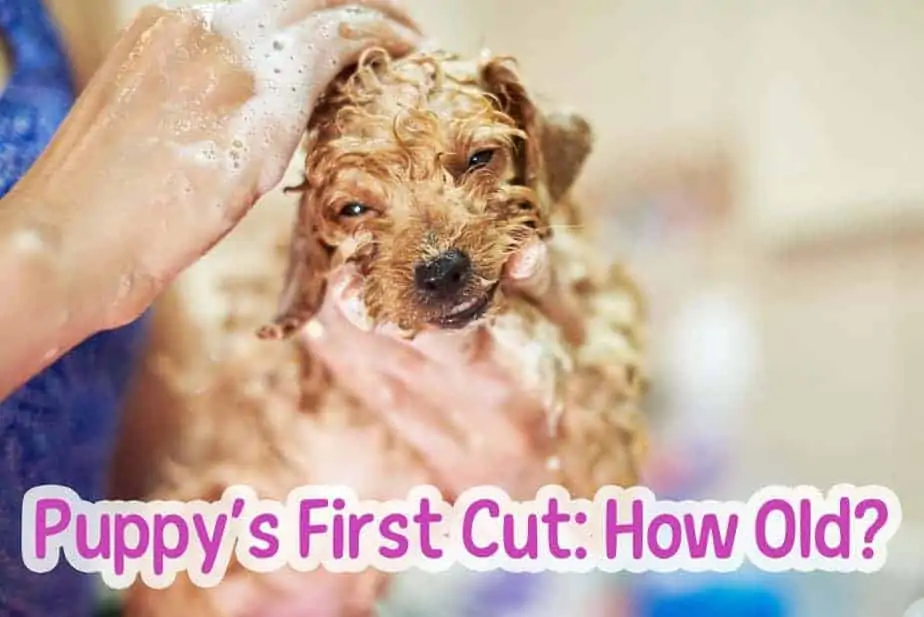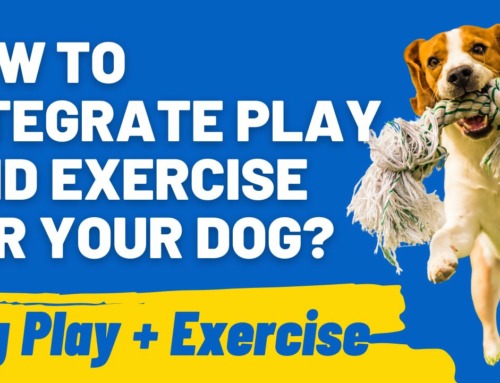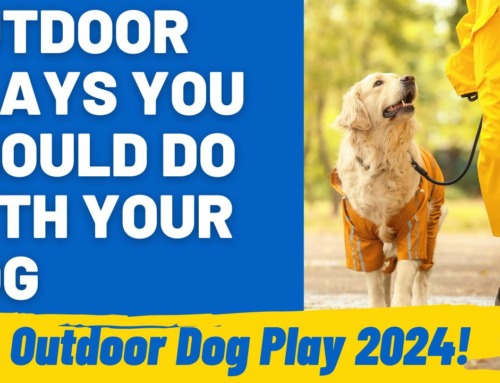If your puppy has hair that continuously grows, rather than fur that sheds, it’s inevitable that they will need haircuts. And you will no doubt be wondering when you should give them their first cut.
In this article, we will cover how old your puppy should be to receive their first cut, as well as other important details you need to know when raising a puppy that will be well-adjusted to grooming.
While the specifics of each type of cut vary by breed and individual, there are several general guidelines you should follow when determining how old your puppy should be to receive their first haircut.
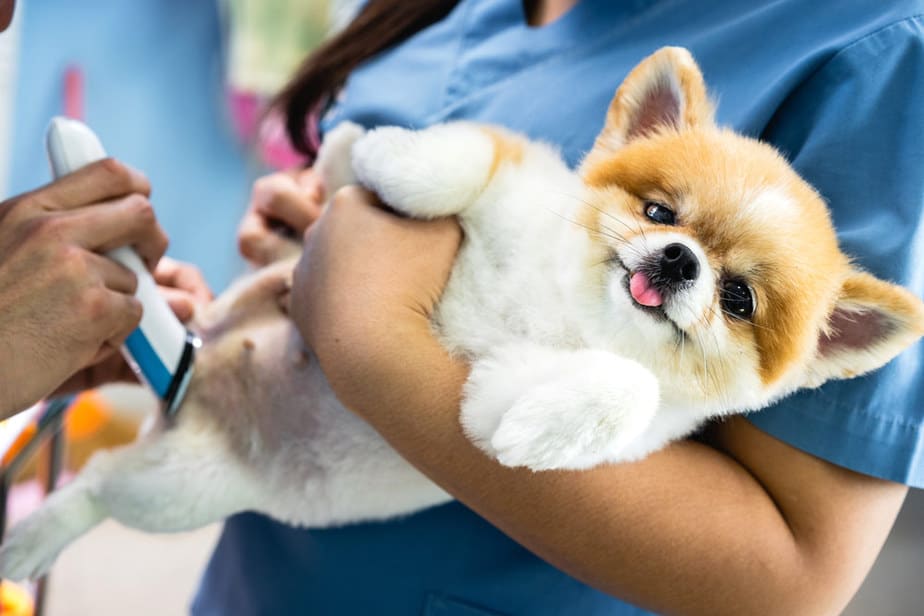
Cutting Your Puppy’s Hair Too Soon – How old should they really be?
Many puppies are ready to get their first haircut when they are 4-6 months old. Some puppies may be ready for their first cut sooner than that. It’s important to get your puppy used to the tools early on.
There’s a lot of misinformation floating around on the internet about the “risks” associated with cutting a puppy’s hair too soon. However, as reputable professional groomers will tell you, the earlier the better for your puppy!
MYTH: Cutting your puppy’s hair too soon will ruin their adult coat.
Proponents of this myth say that you should leave a puppy’s hair alone until their adult coat comes in around 8-12 months. This is false information.
MYTH: Cutting your puppy’s coat too early will change their coloring.
Fortunately, there is no weight to these arguments. In fact, there are many good reasons for getting your puppy in for grooming early on in life.
Puppies have a very important socialization period that occurs when they are 4-16 weeks old. Even if your puppy doesn’t have a coat long enough to be cut at this point, it’s important that you expose your puppy to the tools of the trade so they are comfortable when it does come time for their groom.
Many breeds may have already been exposed to haircuts before leaving for their home. Poodle puppies, for instance, often begin to have their feet and faces trimmed weeks before they’re old enough to live with their new owner.
We get into the how-to’s of your puppy’s first cut, but first are you interested in reading: Petco vs Petsmart (including grooming services)
Or maybe this? Can You Overfeed Your Puppy?
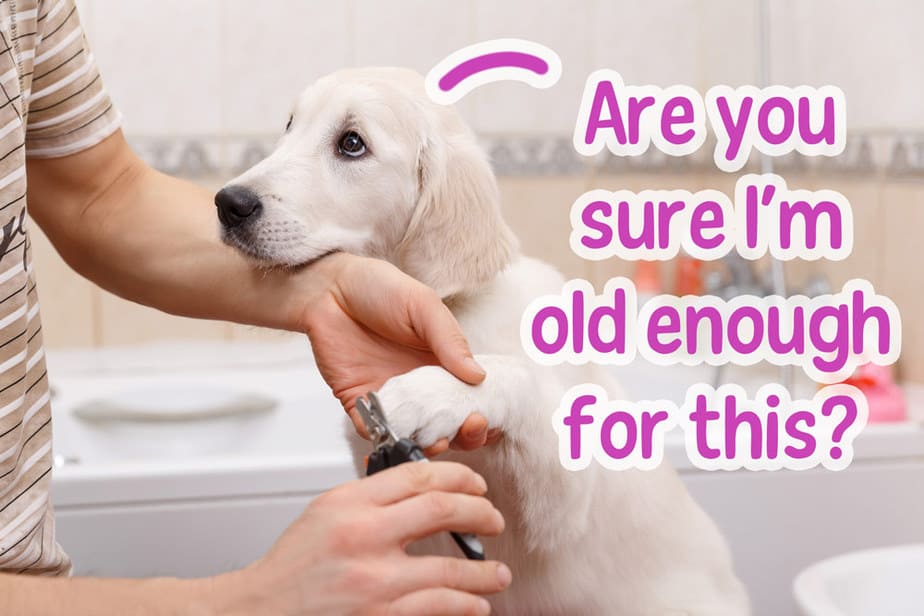
So why do these myths exist?
The myth that cutting a puppy’s coat too early causes them to change colors is likely because puppies often change colors as they age.
It’s often the case that the outer, visible layer of puppy fur is a different color than the adult fur that is coming in underneath.
Cutting a puppy’s coat doesn’t change the color, it simply makes it visible more quickly.
The sudden difference in colors may surprise some owners, but it doesn’t mean it isn’t natural and wouldn’t happen on its own anyway.
As for the myth that cutting a puppy’s coat before their adult coat has a chance to grow-in can damage their adult coat, well, it’s simply a myth.
Hair is not alive. The follicles that grow hair are a part of a living body, but the actual strand of hair that we see is a “dead” collection of keratin.
Strands of hair, whether in a puppy or human, are not connected to any nerves, blood vessels, or anything else that would be able to send signals back to the body.
Thinking about this, it makes sense, as a haircut is completely painless because it is only affecting the strand of hair itself, although having hair pulled hurts because it is affecting the hair follicle.
There’s simply no way for your dog’s body to be confused or their coat to be ruined from a haircut.
The strands of hair that are cut when your puppy is trimmed have no way to communicate this with your puppy’s body.
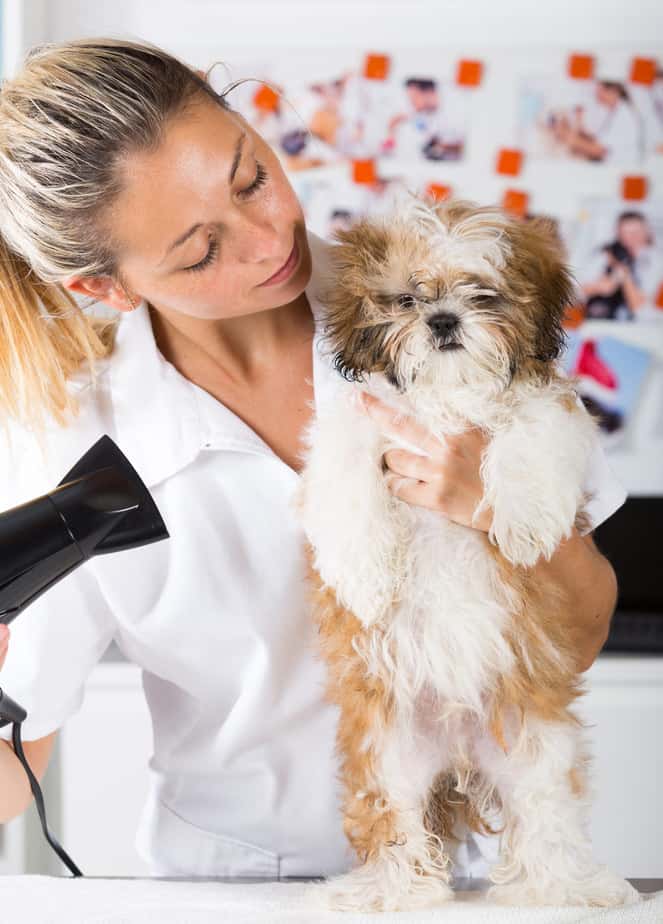
Puppy Grooming for the First Time
It’s normal to be nervous when dropping your puppy off for their first groom, but if you’ve found a wonderful groomer, your puppy will be safe and in good hands!
Since groomers work with plenty of dogs on a regular basis, they are used to puppy antics and how to approach grooming a puppy.
Look for good reviews, ask friends, and even visit a groomer and ask a few questions before committing to an appointment. It’s important to feel comfortable with your groomer.
Veterinarian Comment
It is important that your puppy is well protected against communicable illnesses when submerged in an environment that other dogs frequent. Ensure that the groomer than you schedule your pup with requires up-to-date vaccinations for all dog clients. This is especially important in young dogs as their immune system is not fully mature.
It is recommended that your puppy receive all age-appropriate vaccinations prior to going to the groomer. Vaccinations protecting against respiratory illness are very important, as is the combination puppy vaccination. Speak to your veterinarian regarding their vaccination recommendations.
Dr Marti Dudley
Your Puppy’s First Grooming – What to Expect
- Depending on if your puppy needs to be cut all over or not, as well as the condition of their coat, the first step will be to bathe your puppy or to use clippers and cut their fur.
- During a bath, your groomer will likely shampoo your puppy twice to ensure they are thoroughly clean, and finish with a conditioner to keep the coat in good shape.
- After the bath, it’s drying time! Most groomers will use a force dryer that blows high powered air to quickly dry a dog. These dryers often include various settings so they can start puppies and smaller dogs with a more gentle blow dry.
- Blow drying ensures the groomer can finish cutting your puppy’s hair and brushing them in a timely manner, in addition to leaving your puppy soft and fluffy, while removing any dead, shedding hair.
- Afterwards, your puppy’s groomer will take some time to brush their coat, ensuring they don’t have any mats, as well as helping your puppy get used to the brushing process.
- Finally, if your puppy wasn’t already clipped before their bath, they will be clipped afterwards. Your groomer might also finish up any final touches on their cut, including their face and feet.
While you might be tempted to stay with your puppy for their groom, most grooming facilities will not allow you to do so. This is for safety reasons – both for you and your puppy.
The fact of the matter is that groomers have been trained in safe handling of dogs, and most owners have not. What may seem like help can often be detrimental to your puppy’s groom.
It’s also the case that many puppies are calmer without their owners present. Instead of staying, look for a groomer that can provide information on their education and safety, and then can provide you with a report card afterwards.
How long does puppy grooming take?
On average, most puppy grooms take only 45-60 minutes. How long it takes to groom your puppy depends on your puppy’s coat, how tolerant they are of the grooming, and what grooming procedures will occur.
If your puppy is wiggly, it may take more time as the groomer will spend some of the groom getting your puppy comfortable with being still and accepting grooming.
The length of the groom not only depends on your puppy’s behavior, but on their body size and how much grooming needs to occur as well.
Bigger puppies will take longer because their size means each step – bathing, blow drying, brushing, and cutting – needs to cover more surface area.
If your puppy is young, free of mats, and only experiencing the groom for the sake of getting used to it, it won’t take nearly as long as a puppy that is already matted and needs to be shaved.
How you can help early on
You can help your groomer by preparing your puppy for their first official grooming appointment.
Spending time brushing your puppy, handling their ears, tail, legs, and feet, and introducing other types of equipment will make the process go even smoother.
It’s especially important to introduce grooming equipment before your puppy reaches 12-16 weeks of age.
In their early life, puppies learn about what is safe in the world much easier than they do once this socialization period window ends.
Even if you don’t have the grooming equipment yourself, you can still help prepare your puppy.
The cap of a pen can be a substitute for nail clippers touching their nails, and using scissors to cut dry pieces of spaghetti can imitate the sound.
A vibrating toothbrush can also be used to touch your dog’s body and prepare them for the sensation of the clippers.
Finally, you can also use a metal spoon around your dog’s face and toes to get them used to metal scissors being near their face.
How Often Does My Puppy Need to be Groomed?
If you don’t have professional grooming experience, it’s likely that you’ll end up visiting a dog groomer many times over the course of your dog’s life.
A sample schedule for a puppy going to the groomer is included below.
| Age of Puppy | Grooming Service | Notes |
|---|---|---|
| 4-8 weeks | Introductory grooming at breeder’s home | Not necessary for all puppies, but provides good socialization and introduction |
| 12-16 weeks | First visit to groomer – may include haircut | Provides introduction and socialization still in their socialization window |
| 6 months | Professional groom | |
| 8 months | Professional groom |
After their first groom, your puppy’s groomer will likely suggest a schedule that is best for your individual puppy.
If you are cutting your puppy shorter, and maintaining their coat between visits, you can often extend the time between professional grooming appointments.
On average, though, a dog with a coat that needs trims will need to go in every 6-8 weeks.

